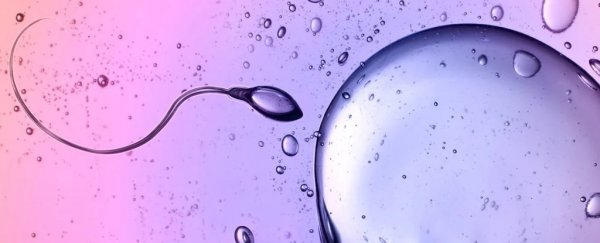In all of medical history, there are only two known cases of 'semi-identical twins' where two separate sperm wriggled their way into a single egg before the embryo split in two.
That rarity shows just how many defenses a human egg deploys, almost always successfully, to stop more than one sperm breaking through its outer coat.
A new study reveals in greater detail how one of those defenses occurs: with rapid molecular changes to a membrane protein called ZP2.
"It was known that ZP2 is cleaved after the first sperm has entered the egg, and we explain how this event makes the egg coat harder and impermeable to other sperm," explains Luca Jovine, a molecular biologist at the Karolinska Institute in Sweden who led the study.
Not only does this hardening of the egg's outer coat block additional sperm from intruding but in doing so, it also protects the fertilized egg until it implants in the uterus wall. If two sperm enter an egg, the egg will usually be destroyed, so stiffening of the egg coat plays a crucial role in successful pregnancies.
On the flip side, understanding how the process of egg coat hardening works – and when it goes awry – could lead to new insights about female infertility and also seed ideas for non-hormonal contraceptives that could temporarily interfere with the formation of the egg coat.
To investigate, the researchers bombarded samples of egg coat proteins with X-rays and electrons to study their 3D structures, as they appear before and after fertilization.
Before fertilization, ZP2 proteins cling to the egg's outer coat, and when a sperm enters, those proteins are snipped (or cleaved) into pieces.
Previous research suggested that cutting up ZP2 proteins somehow altered their shape or the overall architecture of the egg coat, or perhaps inactivated sperm binding sites before more squiggly things could latch on.
Scientists just didn't know what those structural changes specifically were, so the model of ZP2 proteins had remained the same for almost 40 years.
Jovine and colleagues showed that cleaving ZP2 subunits allows them to interact and cross-link like two sides of a zipper. This yanks together filaments of the mesh-like layer of the egg's outer coat, called the zona pellucida, bringing them seven times closer than their structures would normally allow.
In turn, this makes the zona pellucida more rigid, stopping any more than one sperm from worming its way into the egg.
The researchers also studied the interaction between sperm and eggs carrying mutations in the ZP2 protein in mice, with the AI program AlphaFold used to predict the structure of the egg coat in humans.
"Mutations in the genes encoding egg coat proteins can cause female infertility, and more and more such mutations are being discovered," says Jovine.
"We hope that our study will contribute to the diagnosis of female infertility and, possibly, the prevention of unwanted pregnancies."
Hormonal contraceptives, like the contraceptive pill, which stops the ovaries from releasing an egg each month, can come with some serious unwanted side effects, such as mood changes and depression, weight gain, and low libido.
Non-hormonal contraceptives, such as copper intrauterine devices (IUDs), are popular and effective, but their insertion can be incredibly painful for some people.
The more options there are, the better – and maybe one avenue to explore based on this research is targeting ZP2 proteins to turn the egg coat into a fortress. Some male contraceptives would be good too.
The study has been published in Cell.
